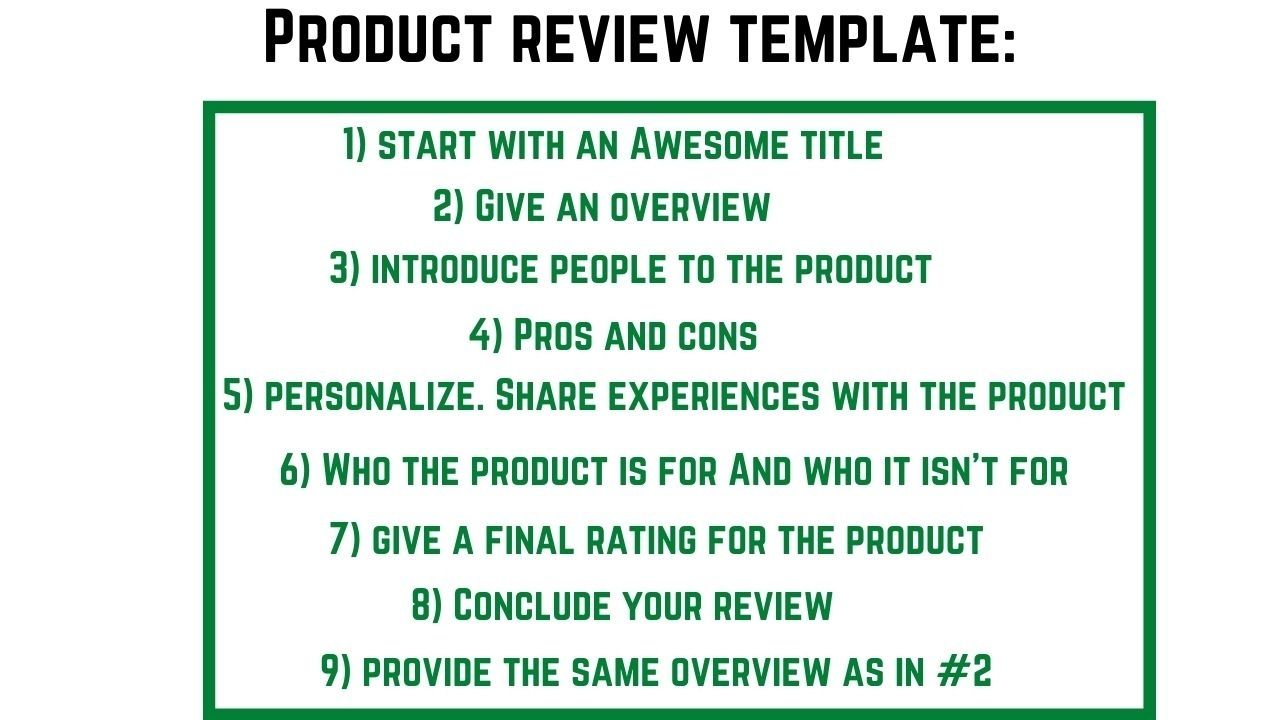Why Honest Reviews Matter: The Impact on Consumers and Brands
Honest and informative product reviews play a crucial role in shaping consumer purchasing decisions and influencing brand reputation. In today’s digital age, online reviews have become an essential part of the buying process, with a significant impact on a product’s success or failure. When considering how to do a product review, it’s essential to understand the importance of honesty and transparency in building trust with potential customers.
A study by BrightLocal found that 85% of consumers trust online reviews as much as personal recommendations. This highlights the significance of authentic and detailed reviews in helping consumers make informed decisions. Furthermore, a product review that provides a balanced view of the product’s features, pros, and cons can help build credibility and trust with potential customers.
On the other hand, fake or biased reviews can have a detrimental effect on a brand’s reputation and ultimately lead to a loss of sales. According to a study by Gartner, 20% of online reviews are fake, which can erode trust and damage a brand’s credibility. Therefore, it’s essential to prioritize honesty and transparency when writing a product review.
When learning how to do a product review, it’s crucial to consider the impact of your words on both consumers and brands. By providing honest and informative reviews, you can help build trust, establish credibility, and contribute to a more transparent online marketplace. In the next section, we’ll explore the factors to consider when selecting a product to review.
Choosing the Right Product to Review: Tips and Tricks
When it comes to writing a product review, selecting the right product is crucial. A well-chosen product can make the review process more enjoyable and increase the review’s credibility. So, how do you choose the right product to review? When learning how to do a product review, consider the following factors: relevance, popularity, and personal experience.
Relevance is key when selecting a product to review. Choose a product that aligns with your interests, expertise, or target audience. For example, if you’re a tech enthusiast, reviewing the latest iPhone or a new smartwatch would be a great choice. On the other hand, if you’re a bookworm, reviewing a best-selling novel or a new release in your favorite genre would be more suitable.
Popularity is another important factor to consider. Reviewing a popular product can increase the review’s visibility and credibility. However, it’s essential to avoid reviewing extremely popular products that have already been extensively reviewed. Instead, opt for products that are popular but not overly saturated with reviews.
Personal experience is also crucial when selecting a product to review. Choose a product that you’ve used extensively or have personal experience with. This will enable you to provide a more in-depth and honest review. For instance, if you’ve recently purchased a new kitchen appliance, reviewing it would be a great way to share your experience with others.
By considering these factors, you can choose a product that is relevant, popular, and aligns with your personal experience. This will make the review process more enjoyable and increase the review’s credibility. In the next section, we’ll explore the research process involved in preparing for a product review.
Pre-Review Research: Gathering Information and Insights
Before writing a product review, it’s essential to conduct thorough research to gather information and insights about the product. This research process is crucial in helping you understand the product’s features, benefits, and potential drawbacks. When learning how to do a product review, consider the following research steps:
Gather product specifications: Start by collecting detailed information about the product’s specifications, including its features, dimensions, weight, and technical requirements. This information can be found on the manufacturer’s website, product manuals, or online marketplaces.
Read manufacturer claims: Next, read the manufacturer’s claims about the product, including its benefits, features, and performance. This will help you understand the product’s intended use and potential advantages. However, be cautious of biased or exaggerated claims, and always verify the information through other sources.
Analyze customer feedback: Analyze customer reviews and feedback from various sources, including online marketplaces, social media, and review websites. This will provide valuable insights into the product’s performance, reliability, and potential issues. Look for patterns and trends in the feedback, and take note of any common complaints or praises.
Consult expert opinions: Consult expert opinions and reviews from reputable sources, including industry experts, critics, and influencers. This will provide additional insights and perspectives on the product, and help you understand its strengths and weaknesses.
By conducting thorough research, you’ll be able to gather valuable information and insights about the product, which will help you write a comprehensive and informative review. In the next section, we’ll explore the importance of hands-on experience with the product.
Hands-On Experience: Putting the Product to the Test
When learning how to do a product review, it’s essential to have hands-on experience with the product. This means using the product extensively before writing a review, to gain a deep understanding of its features, performance, and potential issues. Hands-on experience is crucial in helping you provide an honest and informative review that accurately reflects the product’s strengths and weaknesses.
So, how do you put a product to the test? Start by using the product in various scenarios and environments, to see how it performs under different conditions. For example, if you’re reviewing a smartphone, try using it in different lighting conditions, with different apps, and in various locations. This will help you understand the product’s capabilities and limitations.
Next, test the product’s features and performance, to see how they compare to the manufacturer’s claims. For instance, if you’re reviewing a fitness tracker, test its accuracy, battery life, and water resistance. This will help you provide a detailed and informative review that highlights the product’s strengths and weaknesses.
It’s also essential to pay attention to the product’s user experience, including its design, interface, and overall usability. Ask yourself questions like: Is the product easy to use? Is the interface intuitive? Are the features well-designed and functional?
By having hands-on experience with the product, you’ll be able to provide a comprehensive and informative review that accurately reflects the product’s strengths and weaknesses. In the next section, we’ll explore the importance of structuring your review in a clear and concise format.
Structuring Your Review: A Clear and Concise Format
When learning how to do a product review, it’s essential to structure your review in a clear and concise format. This will help you effectively communicate your thoughts and opinions to your readers, and make your review easy to follow and understand. A well-structured review should include the following elements:
Introduction: Start your review with a brief introduction that provides an overview of the product and its purpose. This should include the product’s name, manufacturer, and any relevant background information.
Product Description: Provide a detailed description of the product, including its features, specifications, and any notable design elements. This should give your readers a clear understanding of what the product is and what it does.
Features: Discuss the product’s features and how they contribute to its overall performance. This should include any notable features, such as innovative technology or unique design elements.
Pros and Cons: Provide a balanced view of the product by discussing its pros and cons. This should include any notable advantages or disadvantages, as well as any areas for improvement.
Conclusion: Summarize your review by providing a conclusion that highlights the product’s strengths and weaknesses. This should give your readers a clear understanding of whether or not the product is worth purchasing.
Here’s an example of what a structured product review might look like:
Introduction
The latest iPhone is a highly anticipated device that promises to deliver a range of innovative features and improvements. In this review, we’ll take a closer look at the iPhone’s design, features, and performance to see if it lives up to the hype.
Product Description
The iPhone features a sleek and durable design, with a range of color options to suit different tastes and preferences. The device is powered by a fast and efficient processor, and comes with a range of storage options to suit different needs.
Features
The iPhone features a range of innovative features, including a high-quality camera, advanced biometric security, and a range of intuitive interface options. The device also comes with a range of built-in apps, including a music player, video editor, and social media apps.
Pros and Cons
The iPhone has a range of notable advantages, including its sleek and durable design, fast and efficient processor, and innovative features. However, the device also has some notable disadvantages, including its high price point and limited battery life.
Conclusion
Overall, the iPhone is a highly impressive device that delivers a range of innovative features and improvements. While it may have some notable disadvantages, the device’s strengths make it a worthwhile purchase for anyone looking for a high-quality smartphone.
Writing Style and Tone: Engaging Your Audience
When learning how to do a product review, it’s essential to consider the writing style and tone that will engage your audience. A well-written review should be informative, yet engaging and conversational. The tone should be professional, yet approachable and relatable.
To achieve this, use a conversational tone that makes the reader feel like they’re reading a review from a friend. Use everyday language and avoid jargon or technical terms that might confuse the reader. Also, use humor and anecdotes to make the review more enjoyable and relatable.
Another important aspect of writing style is to use persuasive language. This means using words and phrases that will convince the reader to try the product or service. Use words like “amazing,” “incredible,” and “outstanding” to describe the product’s features and benefits.
Additionally, use rhetorical devices like metaphors, similes, and allusions to make the review more engaging and memorable. For example, you could compare the product to a popular movie or book, or use a metaphor to describe its features.
Here are some tips to help you write a engaging and persuasive product review:
Use a conversational tone that makes the reader feel like they’re reading a review from a friend.
Use everyday language and avoid jargon or technical terms that might confuse the reader.
Use humor and anecdotes to make the review more enjoyable and relatable.
Use persuasive language to convince the reader to try the product or service.
Use rhetorical devices like metaphors, similes, and allusions to make the review more engaging and memorable.
By following these tips, you can write a product review that is both informative and engaging, and that will persuade the reader to try the product or service.
Visuals and Multimedia: Enhancing Your Review with Images and Videos
When learning how to do a product review, it’s essential to consider the role of visuals and multimedia in enhancing the review. Incorporating images, videos, and infographics can help to break up the text, make the review more engaging, and provide a more comprehensive understanding of the product.
Images can be used to showcase the product’s features, design, and packaging. They can also be used to demonstrate how the product works, and to highlight any notable features or benefits. When using images, make sure to optimize them for web use by compressing them to reduce file size and improve page loading times.
Videos can be used to provide a more in-depth look at the product, and to demonstrate its features and benefits. They can also be used to provide a tour of the product, and to show how it works in different scenarios. When using videos, make sure to optimize them for web use by adding captions, tags, and descriptions.
Infographics can be used to provide a visual representation of the product’s features, benefits, and specifications. They can also be used to compare the product to similar products, and to highlight any notable differences or advantages. When using infographics, make sure to keep them simple, clear, and easy to read.
Here are some tips for creating and optimizing visual content for your product review:
Use high-quality images that are clear, well-lit, and in focus.
Optimize images for web use by compressing them to reduce file size and improve page loading times.
Use videos to provide a more in-depth look at the product, and to demonstrate its features and benefits.
Optimize videos for web use by adding captions, tags, and descriptions.
Use infographics to provide a visual representation of the product’s features, benefits, and specifications.
Keep infographics simple, clear, and easy to read.
By incorporating visuals and multimedia into your product review, you can make it more engaging, informative, and comprehensive. This can help to increase the review’s credibility, and to make it more useful to readers.
Finalizing Your Review: Editing, Proofreading, and Publishing
Once the initial draft of the product review is complete, it’s essential to refine and perfect the content through editing, proofreading, and publishing. This step is crucial in ensuring the review is accurate, engaging, and free of errors. To finalize a product review, follow these steps:
Edit the review to ensure it is well-structured, concise, and easy to follow. Check the review’s organization, making sure the introduction, product description, features, pros and cons, and conclusion are all clearly defined and logically connected. Verify that the review provides a balanced view of the product, highlighting both its strengths and weaknesses.
Proofread the review multiple times to catch any spelling, grammar, or punctuation errors. A single mistake can undermine the credibility of the review and the reviewer. Use grammar and spell check tools to help identify errors, but also manually review the text to catch any mistakes that may have been missed.
Fact-check the review to ensure all information is accurate and up-to-date. Verify product specifications, features, and pricing to prevent any misinformation. This step is critical in maintaining the trust and credibility of the review.
Optimize the review for search engines by incorporating relevant keywords, such as “how to do a product review,” naturally throughout the text. This will help improve the review’s visibility and reach a wider audience.
Finally, publish the review on a platform such as a blog, YouTube, or social media. Consider sharing the review on multiple platforms to maximize its reach and impact. Encourage engagement by responding to comments and questions from readers, and be open to revising the review based on feedback.
By following these steps, a product review can be transformed from a rough draft into a polished, informative, and engaging piece of content that provides value to readers and helps them make informed purchasing decisions. Remember, the goal of a product review is to provide an honest and balanced assessment of a product, and by finalizing the review through editing, proofreading, and publishing, reviewers can ensure their content meets this goal.








